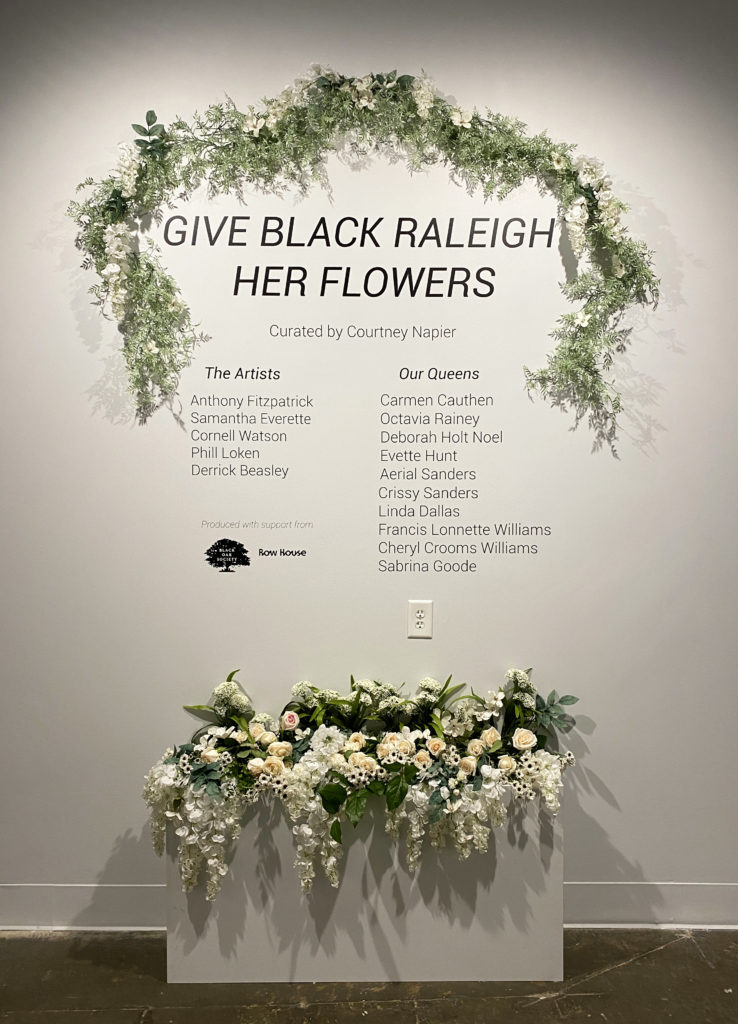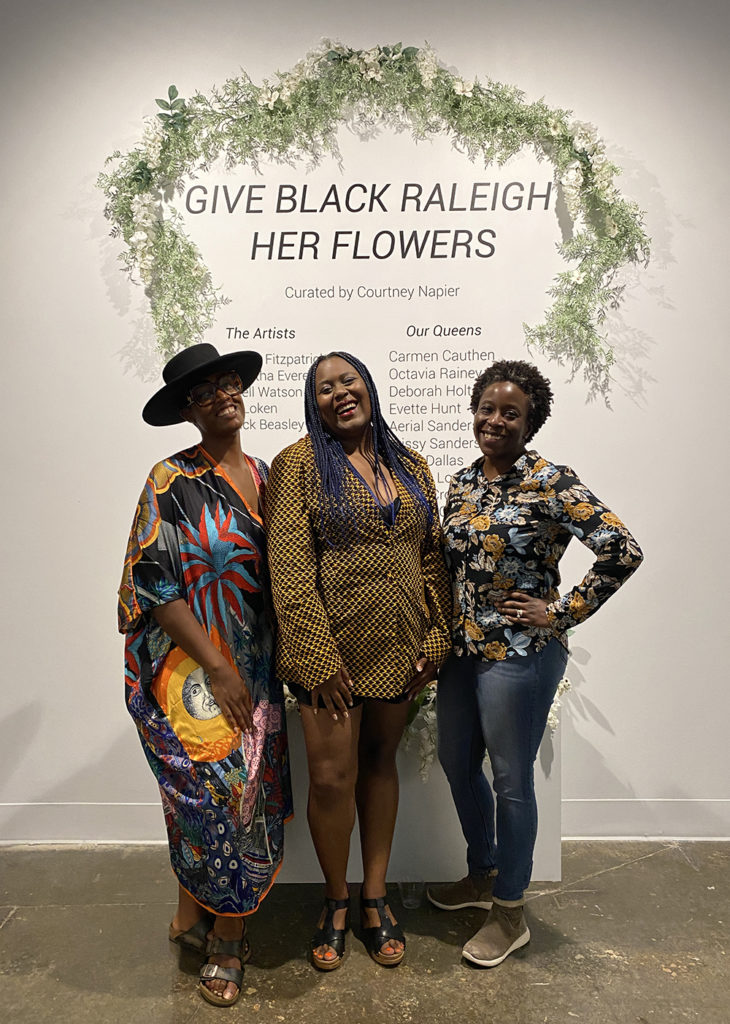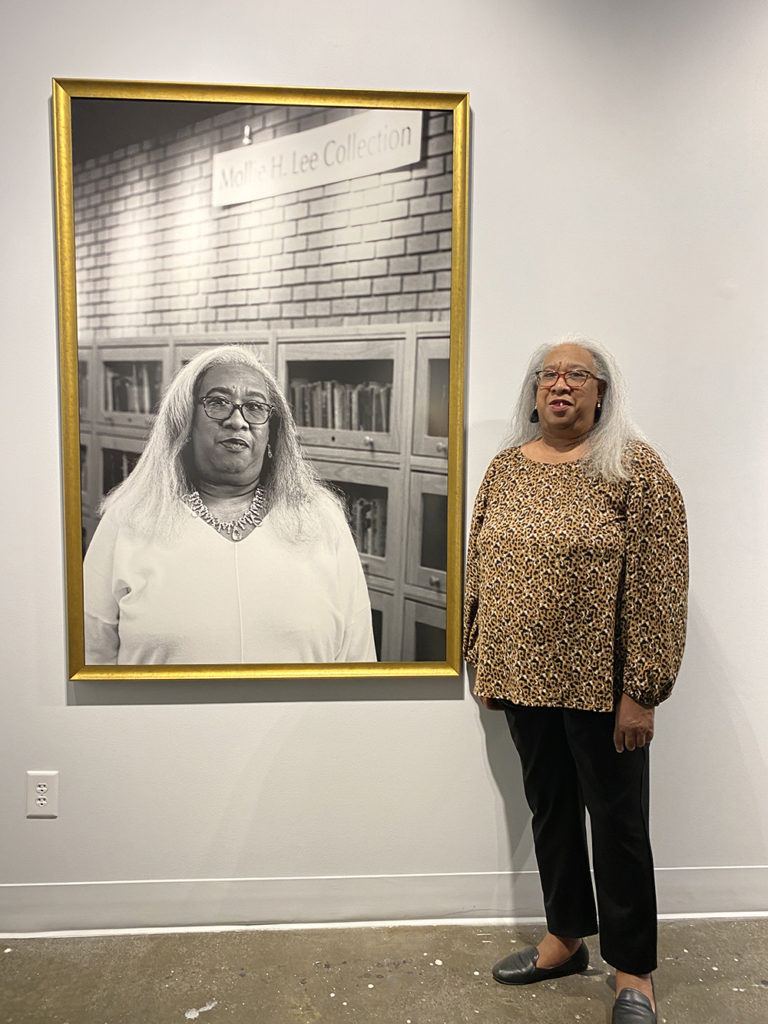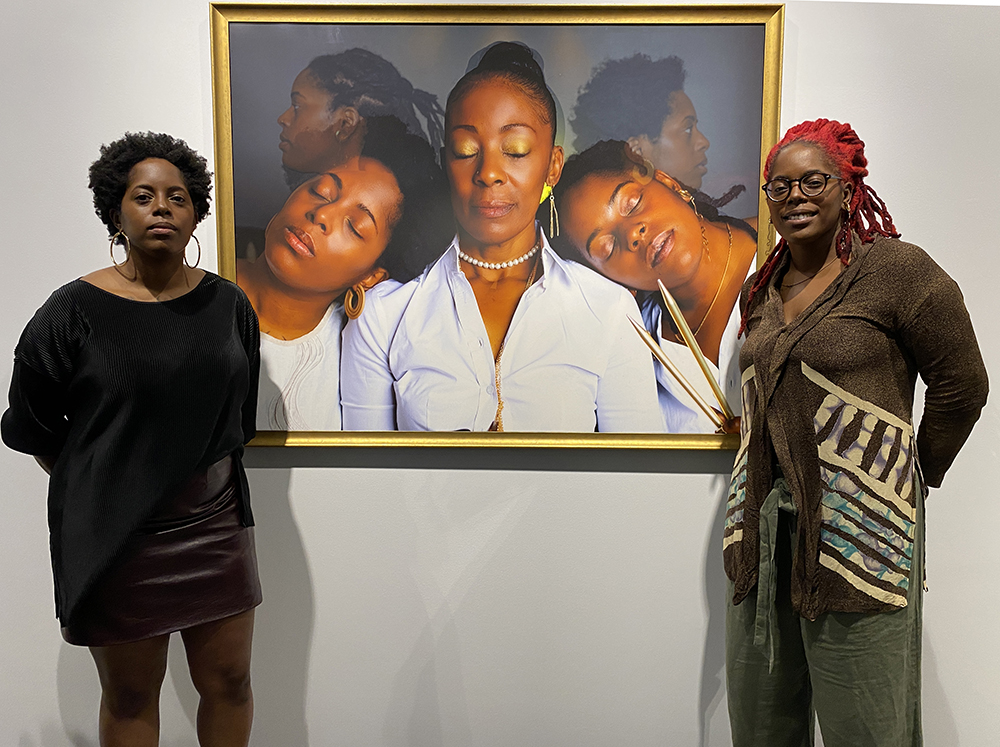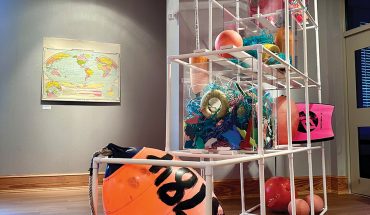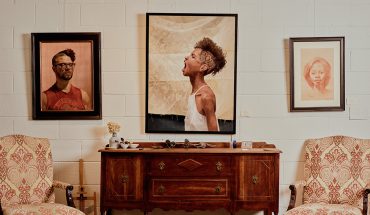A new photography exhibit curated by Courtney Napier celebrates 10 Raleigh women dedicated to preserving the city’s Black history.
by Colony Little
“It is so clear that you have to cherish everyone. I think that’s what I get from these older Black women, that every soul is to be cherished, that every flower is to bloom.”
—Alice Walker
To “give someone their flowers” describes the respect you pay to someone as an expression of gratitude for their love, support, and inspiration. It is in this spirit that writer Courtney Napier, founder of the Black Oak Society, curated a show at Anchorlight Gallery that celebrates 10 Black women whose work influenced Napier and the City of Raleigh at large.
In “Give Black Raleigh Her Flowers,” Napier collaborated with local photographers to create a series of portraits that celebrate the life’s work of Carmen Cauthen, Linda Dallas, Sabrina Goode, Deborah Holt Noel, Evette Hunt, Ariel Sanders, Crissy Sanders, Octavia Rainey, Cheryl Crooms Williams and Francis Lonnette Williams.
The idea for the show came to Napier years ago after coordinating a community panel discussion about housing as part of a group called AFAR (Activating Families Across Raleigh). “The front row was full of Black Raleigh residents who had been trying to get the attention of the councilperson and the city official that had been invited — Ms. Octavia Rainey was in the front row — and I did not know these women at the time,” she says. Their participation in this event opened Napier’s eyes to deeper concerns about affordable housing, gentrification, and the unhoused: “At that point I was enthralled with these women.”
Napier continued to build a relationship with Rainey while launching her writing career focusing on community and political concerns that impacted Raleigh’s Black residents. When Napier created the Black Oak Society in 2020 she dedicated the fourth issue of the zine to the Black women of Raleigh who played an important role in her personal education on the history of the city. Through writing, Napier began to develop a closer connection to a history of Raleigh that had been relatively unknown. “That’s what ignited this passion to tell stories about these women and these place,” she says. ”So many people have no idea how we got here.”
One of those areas is Oberlin Village, a thriving Reconstruction era enclave of freed African American residents established in 1866. The Friends of Oberlin Village was founded in 2011 to preserve the historical homes and the cemetery. In the exhibition are a pair of portraits featuring two of its members: Sabrina Goode, the executive director and Cheryl Crooms Williams, co-founders of the organization.
Another area of historical preservation is honored in a portrait of Carmen Cauthen, who grew up in Oberlin Village and is completing a book about Raleigh’s historic Black neighborhoods. Cauthen’s portrait highlights another Raleigh luminary within the photograph taken by Phill Loken, who was purposeful about the details he included in the image. “When I look at her face in the piece from the exhibition, I feel like she wants to teach me something. It’s almost as if she’s saying, let me explain this to you,” says Loken. The chosen location of Cauthen’s portrait, at the Richard B. Harrison Community Library, also encourages viewers to learn about another important figure in Raleigh’s history: Mollie Huston Lee, Wake County’s first Black librarian. “I feel like the energy of Mollie H. Lee’s own devotion to black people was channeled through the signs and books,” says Loken.
For many of the photographers participating in this exhibition, visual storytelling is the driving force behind their work. “Raleigh’s history is rich and important to this country,” says photographer Anthony Fitzpatrick, “and this show gives some insight on that as it highlights women who’ve been part of the fabric of the Black community in Raleigh, nurturing some of the greatest minds and movements we’ve seen.” His touching portrait features a mother, Evette Hunt, sitting between her twin daughters Aerial and Crystal Sanders. Fitzpatrick knew his subjects from his days studying at Shaw University. Those close ties allowed him to showcase unique elements of their personalities and talent within the photograph: “Giving someone their flowers to me means to appreciate them for who they are, what they do and what they’ve accomplished,” says Fitzpatrick. “I know from interactions with the family that both Crystal and Aerial credit their mentality and entrepreneurial spirit to their mother. They’ve leaned on her for advice, guidance and support. I also know that their accomplishments keep Evette striving as well. That’s why I wanted to show each daughter in their own space but also leaning on their mother, willingly, as she is the foundation for what they do.”
The portrait of Linda Dallas commands a powerful presence within the gallery. As a professor of Art at Saint Augustine’s University, Dallas has combined art, activism, and historical preservation bringing attention to the history of St. Agnes hospital, a medical care facility and training center for nurses that served the Black community of Raleigh for over 65 years. Samantha Everette photographed Dallas within the stunning brick remains of the hospital, which is a historical landmark, as a background. “I always want to make sure that each subject feels like the best version of themselves,” she says. “I tried to make sure each woman was comfortable in front of the camera. This way their gaze is through the camera, which I think helps to connect with the viewer.”
For Napier, shifting the storytelling from a written format to a visual realm, required that her photographers understood the unique vision of this show as a celebratory homage. “I wanted to create a space that would extend that feeling, to lift it off the page,” she says. “I had this vision of creating this royal portrait hall to honor the women we were speaking about.”
As viewers walk through the Anchorlight’s royal portrait hall, queens hold court in a tribunal of sisters whose tireless work as historians, orators, artists, creatives, entrepreneurs, writers, and storytellers are the golden thread in Raleigh’s rich regal tapestry.
This exhibition is on view through June 25. Schedule a visit at anchorlightraleigh.com.

